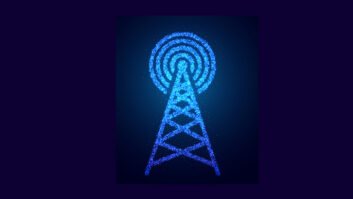After a few starts and stops, the Federal Communications Commission has approved a construction permit for a new FM translator in El Cajon, Calif. — after making clear its rules on issues like contour overlap, engineering errors and how best to calculate interference for translators that do not yet exist.
It was a back and forth battle for two licensees looking to get broadcast licenses approved. Last year Family Stations Inc. came out on top as the winning bidder for a new cross-service translator station in El Cajon, though it soon saw its application dismissed by the Media Bureau for potential contour overlap violations.
[Read: FCC Deletes Call Signs of Two California FM Stations]
While Family Stations went about filing a petition to amend that translator application, licensee Positive Hope filed a modification application seeking a new transmitter site for its low-power station KVIB. But that petition too was given a hard stop by the FCC when the Media Bureau dismissed the modification application due to a failure to comply with minimum distance separation requirements.
In the meantime, Positive Hope filed an objection to Family’s translator amendment and asked the Media Bureau to step in and reconsider the earlier dismissal of its own application.
Family responded in a petition for reconsideration by arguing that its translator amendment is permissible under FCC Rules. It quoted the section of the rules that defines an application for minor change any application seeking to make a channel change to any same-band frequency “upon a showing of interference to or from any other broadcast station.”
Family pointed to interference with station KKLJ(FM) in Julian, Calif., as the basis for its translator amendment and said it has identified at least 83 individuals who are located within or very close to the area in which the 60 dBu contour of the translator overlaps the 45 dBu contour of station KKLJ. These individuals would “likely experience interference if the translator were to operate on the frequency proposed in the initial application,” the licensee said.
Not so fast, argued Positive Hope. In its informal objection and petition, the licensee contended that Family is not eligible to apply for a non-adjacent channel change under FCC rules because Family cannot demonstrate interference because “no interference can exist for a translator that cannot exist.”
Plus, Positive Hope said, if a nonadjacent channel change were allowed in this circumstance, “any translator applicant that gets dismissed for any fatal translator engineering error would simply find any nearby FM broadcaster that would appear to interfere with the translator applicant’s original proposal, then pull together a petition for reconsideration.”
Positive Hope also argued that the translator amendment was unacceptable at the time it was filed because the specified facility conflicted with co-channel station DKRSA(LP) in El Cajon, Calif.
But the FCC has very specific rules on when it can consider certain petitions. In these cases, the Media Bureau said that it will consider a petition for reconsideration only when the petitioner shows either a material error in its original order or new facts are raised that were not or existing at the time. The commission said that Positive Hope failed to meet either burden.
The commission clarified that yes, in fact, Family is eligible to seek a non-adjacent channel change for the station because the channel change rule set out in the FCC rules applies to amendments to long-form applications. Furthermore, the commission said it would favorably consider petitions for reconsideration of an initial dismissal when the applicant submits an amendment within 30 days of dismissal.
In the case of Family, the licensee made a proper showing of interference to justify a non-adjacent channel change under the FCC rules; such a showing may consist of a simple engineering statement of mitigation of interference at the requested frequency, the bureau said.
An unbuilt station, by necessity, must submit a showing of predicted rather than actual interference. In this case, the commission found a significant zone of potential interference within the contour overlap of the translator’s 25 dBu contour and KKLJ’s 45 dBu contour — that indicates a substantial possibility of interference to KKLJ listeners in this area. No such zone of potential interference would be created with another broadcast station at the proposed frequency. Therefore, the commission accepted Family’s showing that the proposed non-adjacent channel change would avoid predicted interference.
The bureau did not buy Positive Hope’s argument that Family’s translator application should have been dismissed for failing to protect DKRSA. In this case, the filing of a petition for reconsideration does not automatically stay the decision for which reconsideration is sought. Instead, a bureau action remains in full force and as a result, there is no basis for reconsidering the staff’s decision not to dismiss the translator application due to the status of the cancelled DKRSA facility.
As a result, the bureau granted the petition for reconsideration filed by Family Stations, it reinstated the new translator application and denied the objections filed by Positive Hope.







